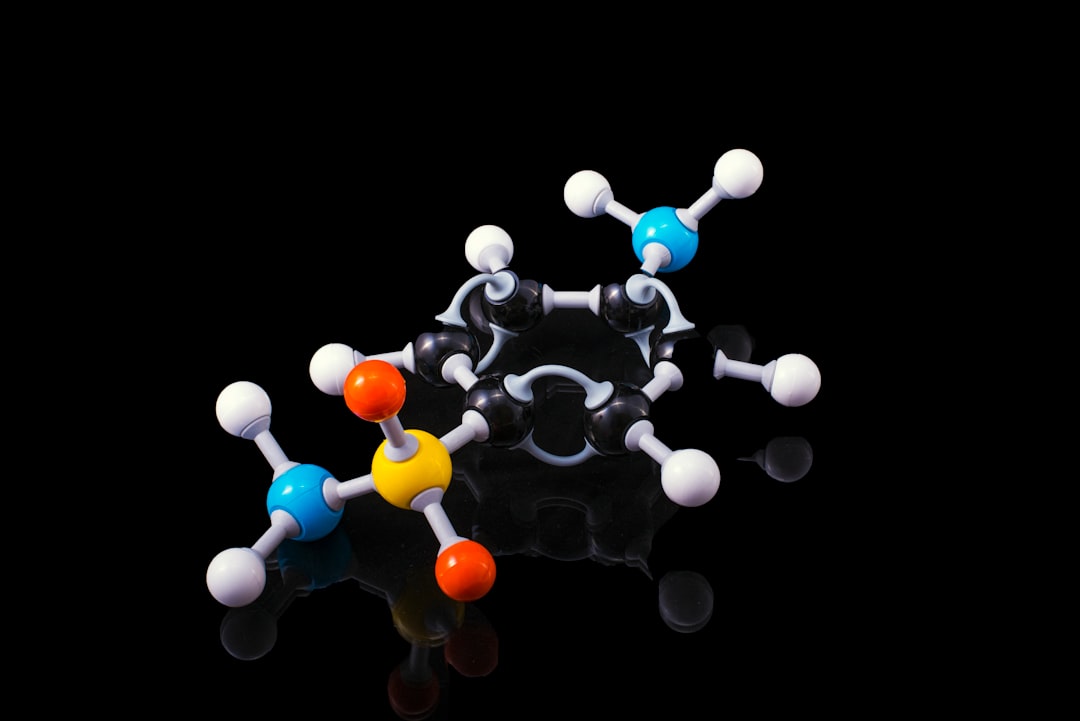What is it about?
Chiral photonic crystals [CPC] are a class of photonic crystals in which the index variation along a particular light propagation direction exhibits helicity with a pitch on the order of the wavelength of light resulting in selective transmission and reflection of circularly polarized lights, and polarization rotation that is independent of the incident plane of polarization. CPC’s currently under developments face challenges in terms of large optical losses, limited tunability, narrow operation bandwidth, and insufficient optical thickness for practical use. Cholesteric liquid crystals (CLCs) made by molecular self-assembly could overcome some of these limitations, but the fluidic nature of CLCs allows fabrication of well-aligned helices by molecular self-assembly to a thickness of ~100 μm at best due to the limited extent of surface anchoring forces. However, in many photonic operations such as polarization switching and ultrafast laser pulse modulation, thicknesses of several 100’s of μm or more are needed. This thickness requirement has posed serious challenges to molecular self-assembly of soft matters such as CLC. To meet these challenges, we experimentally study the dynamical evolution of molecular self-assembly—cholesteric helical alignment and defect formation in the bulk of a very thick CLC starting mixture under various applied field conditions, investigate how different applied fields can be utilized to control cholesteric helical alignment and prevent unremovable defects from forming, and develop a room-temperature dual frequency field assembly technique for fabricating stable well-aligned CLCs to record-setting thicknesses of > 2000 μm (having a super-high period number N [thickness/grating period] ~ 7000).
Featured Image

Photo by Jeremy Bishop on Unsplash
Why is it important?
The room-temperature dual-frequency field assembly [DFFA] technique reported in this article eliminates all the undesirable side effects associated with other self-assembly techniques (with or without field assist) that involve large temperature changes, and can routinely achieve CLC thicknesses that satisfy stringent requirements in ultrafast pulse modulation and polarization rotation and switching of complex laser vector field. Linear and nonlinear optical properties of a chiral photonic crystal such as CLC depends strongly on the grating period number N, experiencing an enhancement that grows with nonlinearly with N. With a thickness of over 2000 μm and N ~ 7000, their optical properties approach those of a fully developed [N → infinity] CPC and open up new and broad spectral bands from the visible to (invisible)mid-infrared where both transmission and process efficiencies are optimal.
Perspectives
Tunable as well as highly nonlinear CPC’s with super-high N [SNCPC] offer many new possibilities for fundamental pursuits and applications in hitherto unexplored/unexploited spectral and temporal regimes and will significantly impact the study and application of chiral photonic crystals, or photonic crystals in general. The technique of fabricating super-high-N CPC employs readily available liquid crystal constituents and electrical voltage generators and will see wide usage and easy incorporation in laboratory or industrial settings.
Professor Iam Choon Khoo
Pennsylvania State University
Read the Original
This page is a summary of: Massive, soft, and tunable chiral photonic crystals for optical polarization manipulation and pulse modulation, Applied Physics Reviews, March 2023, American Institute of Physics,
DOI: 10.1063/5.0139168.
You can read the full text:
Contributors
The following have contributed to this page










